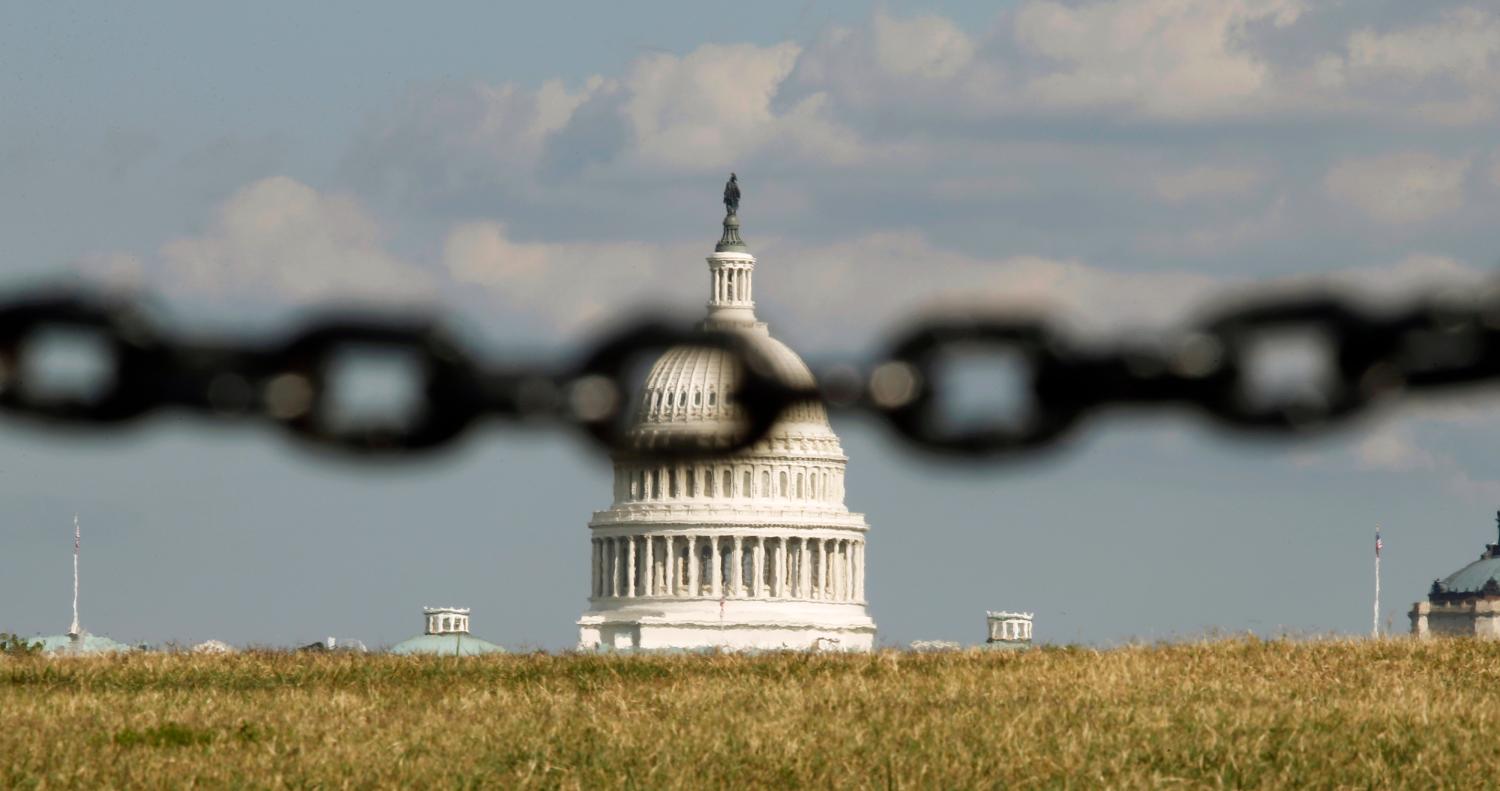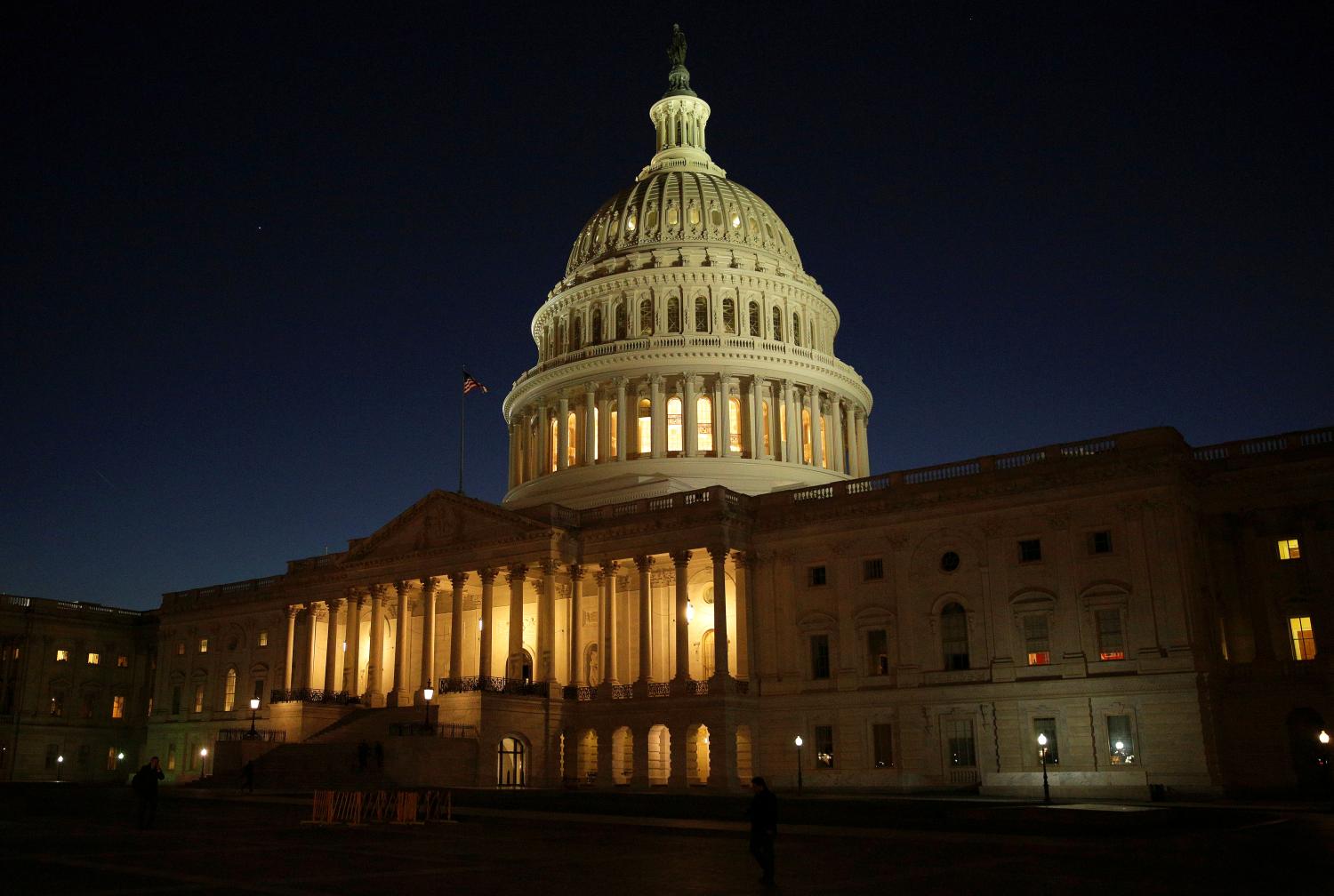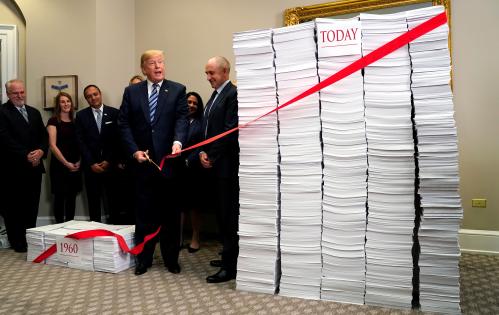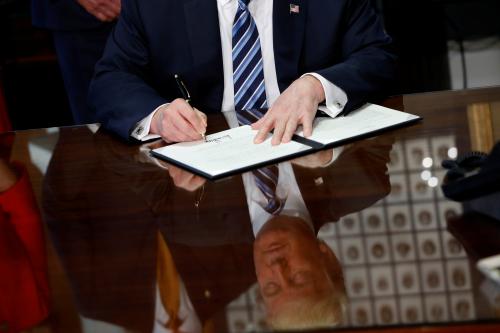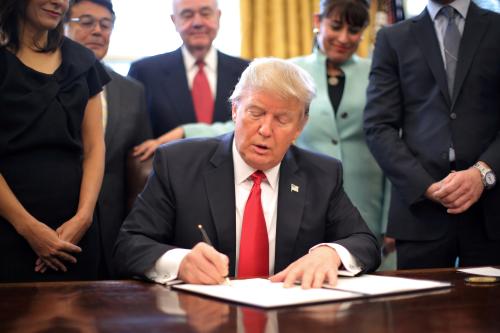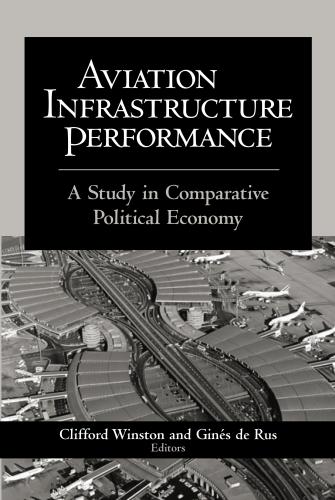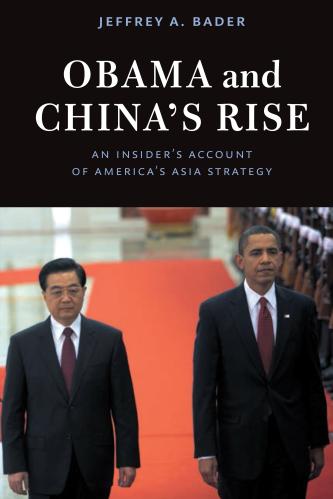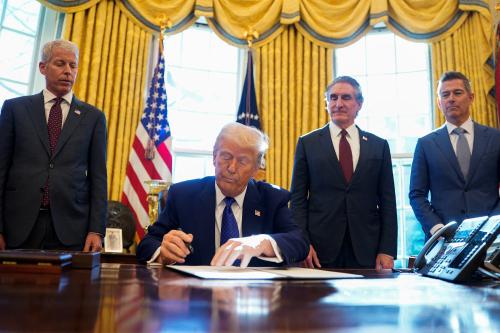This report is part of the Series on Regulatory Process and Perspective and was produced by the Brookings Center on Regulation and Markets.
Regulatory politics, not usually the stuff of headlines, is suddenly above-the-fold news. In his first week, President Trump laid out an ambitious anti-regulatory goal of eliminating “75%–maybe more” of existing regulation. Last week he followed up on that pledge, signing an executive order adopting a “2 for 1” policy for new regulations and issuing another order to consider rolling back Dodd-Frank regulations.1
However, despite this flurry of activity, it’s too soon to conclude that the regulatory state as we know it is in retreat.
First, in spite of the flash and sizzle, several of Trump’s actions, which draw from the standard policy playbook, have limited scope. For example, the “regulatory freeze” on all pending regulations that the administration issued in his first week has become standard operating procedure for new presidents. Indeed, the freeze was nearly identical to a memorandum issued by the Obama administration. This policy is further limited in that it applies to only the small fraction of the Obama administration’s rules that are still in progress. The majority of those completed over the last eight years are, for the time being, safe.
Additionally, as other scholars have noted, the “2 for 1” policy is similar to policies that have been adopted in several countries, including Canada and the U.K. While the policy is likely to have a chilling effect on the creation of new regulations, it is unlikely that the conservative Trump administration was going to be doing a whole lot of regulating anyway. Further, because Trump used an executive order to enact this policy, a future administration could easily revoke it.
There are institutional factors that will present formidable obstacles to the new administration’s anti-regulatory agenda. The biggest hurdle to the dismantling of the regulatory state is procedural.
Second, and more importantly, there are institutional factors that will present formidable obstacles to the new administration’s anti-regulatory agenda. The biggest hurdle to the dismantling of the regulatory state is procedural. The process of creating a new regulation (as well as repealing existing ones, as in the Dodd-Frank case) is known as “notice and comment” and it takes years, and in some cases decades. Federal agencies must gather evidence, meet with stakeholders, publish a proposal, solicit public comments, and then, eventually, publish a binding regulation. Importantly, this process cuts the other way too; the president cannot simply issue an executive order rescinding regulations he does not like. Rather, federal agencies must go through the same laborious notice and comment process to undo existing regulations. This could take many, many years.
Carrying out this deregulatory movement will require the cooperation of a small army of bureaucrats. Although the president will have his hand-selected appointees leading executive branch agencies, presidential appointees make up only a tiny fraction of the federal workforce. In reality, much of this work will fall to career civil servants, many of whom have spent the last few years (or decades in some cases) putting the existing regulatory framework into place. Given what we have already seen from civil servants, not everyone is inclined to play along.
Additionally, when it comes to rulemaking, bureaucrats have a lot of authority over how the process plays out, particularly in terms of the (sometimes glacial) pace at which regulatory actions move through the pipeline. Since agencies are responsible for managing the notice-and-comment process, they have some control over its pacing. In an empirical analysis of more than 11,000 regulations from 150 executive branch agencies, I found that agencies are more likely to “slow-roll,” or move a regulation slowly through notice-and-comment, at points when the political environment is not favorable to the agency’s interests.
The new administration will also have to contend with the courts. When federal agencies create a new regulation (or repeal an existing one), they must do so on the basis of an evidentiary record; this is how an agency justifies that the action is necessary and that their approach is logically sound. As President Reagan found out when he tried to repeal a costly seatbelt rule issued by the Carter administration, courts tend to be skeptical when regulations are repealed for what look like purely political reasons. Absent a change in the underlying record justifying a repeal, an agency changing an existing regulation opens itself up to charges of “arbitrary and capricious” action, and progressive groups are more than willing to challenge Trump’s actions on these grounds. Life-tenured appellate judges, many of whom lean leftward, do much of the heavy lifting on regulatory issues, and they are unlikely to accept deregulatory actions undertaken without careful consideration of procedural and substantive issues.
Finally, Congress has a say on whether Trump realizes his deregulatory vision. Working together with congressional Republicans, Trump could work quickly to repeal large numbers of regulations legislatively (e.g., passing laws that “overwrite” existing rules). This would, of course, circumvent the notice-and-comment procedural concerns outlined above, streamlining things for Trump and his allies. Congress has already taken aim at some eleventh hour Obama regulations, initiating action on several pending rules under the Congressional Review Act (CRA). If Congress is successful in overturning these regulations, the CRA indefinitely prohibits the agency from issuing a “substantially similar” rule. So, unlike Trump’s executive actions, this would effectively serve as a durable ban against regulation in those particular policy areas.
Additionally, there are several bills pending on the Hill would give Congress greater authority in the regulatory process, and would make it even harder for agencies to create new regulations. If any of these bills pass, Trump’s hand would be strengthened in the short term. However, over the longer term, continued congressional cooperation on regulatory issues requires Trump to stay in the good graces of his Republican colleagues. Given the fissures we have already seen, the White House’s relationships on the Hill are volatile and regulatory cooperation is not a sure bet.
The upshot of all of this is that Trump’s anti-regulatory agenda is within reach, but it will require sustained effort and commitment from the (already overtaxed) new administration. Of course, an alternative to repealing regulations will be for the administration simply to decline to enforce those rules that are already on the books. Feeble enforcement is harder for courts and other actors to counter than formal deregulation. The new administration’s focus on reducing agency staff sizes (particularly at “problematic” agencies like the Environmental Protection Agency) provides an indication that lax enforcement is on the agenda too. Stay tuned.
The author did not receive financial support from any firm or person for this article or from any firm or person with a financial or political interest in this article. She is currently not an officer, director, or board member of any organization with an interest in this article.
-
Footnotes
- The “2 for 1” order also establishes a cap on incremental regulatory costs. The Dodd-Frank order requires the Secretary of Treasury to issue a report in 120 days on whether existing regulations comply with the administration’s financial regulation principles. It does not call for the repeal of any specific regulations.
The Brookings Institution is committed to quality, independence, and impact.
We are supported by a diverse array of funders. In line with our values and policies, each Brookings publication represents the sole views of its author(s).

